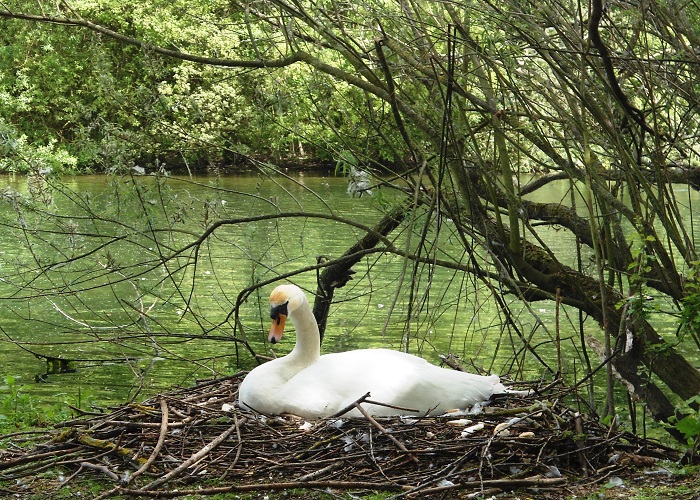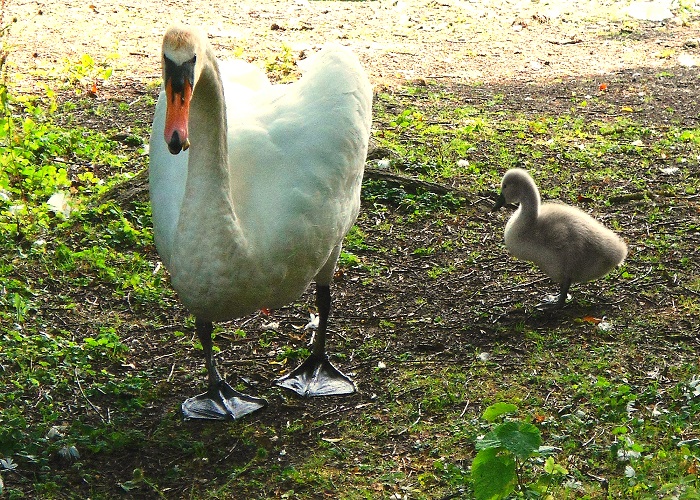Most weekends we spend at the lake which is a flooded gravel pit with a spit of land in the middle where there may be anything from a few dozen to a few hundred water birds going placidly about their business – gulls, geese, ducks, swans – even black swans – herons – up to 200 species have been seen here.
Over the last few months we have observed swans and their nesting habits, incubation, feeding. Here are ten things I learned about them:
1) The average lifespan of a swan is 12 years. In a protected environment this figure can reach 30 years.
2) Swans can be fed with fresh bread which should be thrown in the water so they can swallow it easily. Alternatively you can feed them with wheat or corn, lettuce or spinach.
3) It is normal for a swan to fold one of its legs up onto its back. The first time I saw it I was worried, took a picture and emailed to the nature reserve volunteers.
4) Swans will normally mate from spring through summer with babies born from May to July.
5) It takes 2- 3 weeks for swans to build a nest. Once the nest is finished the egg laying process can begin with an egg being laid every 12 – 24 hours. The eggs are incubated for around 42 days (6 weeks)
6) It’s normal for female swans to lose weight during the nesting period. They do tend to feast before nesting season as they know food will be difficult to get.
7) The number of eggs hatched depends on the swan’s age – it tends to decrease with time. Swans can hatch up to ten eggs but only one can survive.
8) Cygnets stay with their parents for up to 6 months. Once they pass that stage parents chase them away. Cygnets usually stay with another flock of swans until they are 4 years old when they get “married”.
9) Swans moult in July and August and are unable to fly. If they are breeding couple then only one at the time loses their feathers.
10) All the mute swans in England and Wales are owned by the Queen. Every year, during the third week of July, Swan Upping, the annual census of the swan population on stretches of the River Thames takes place.













